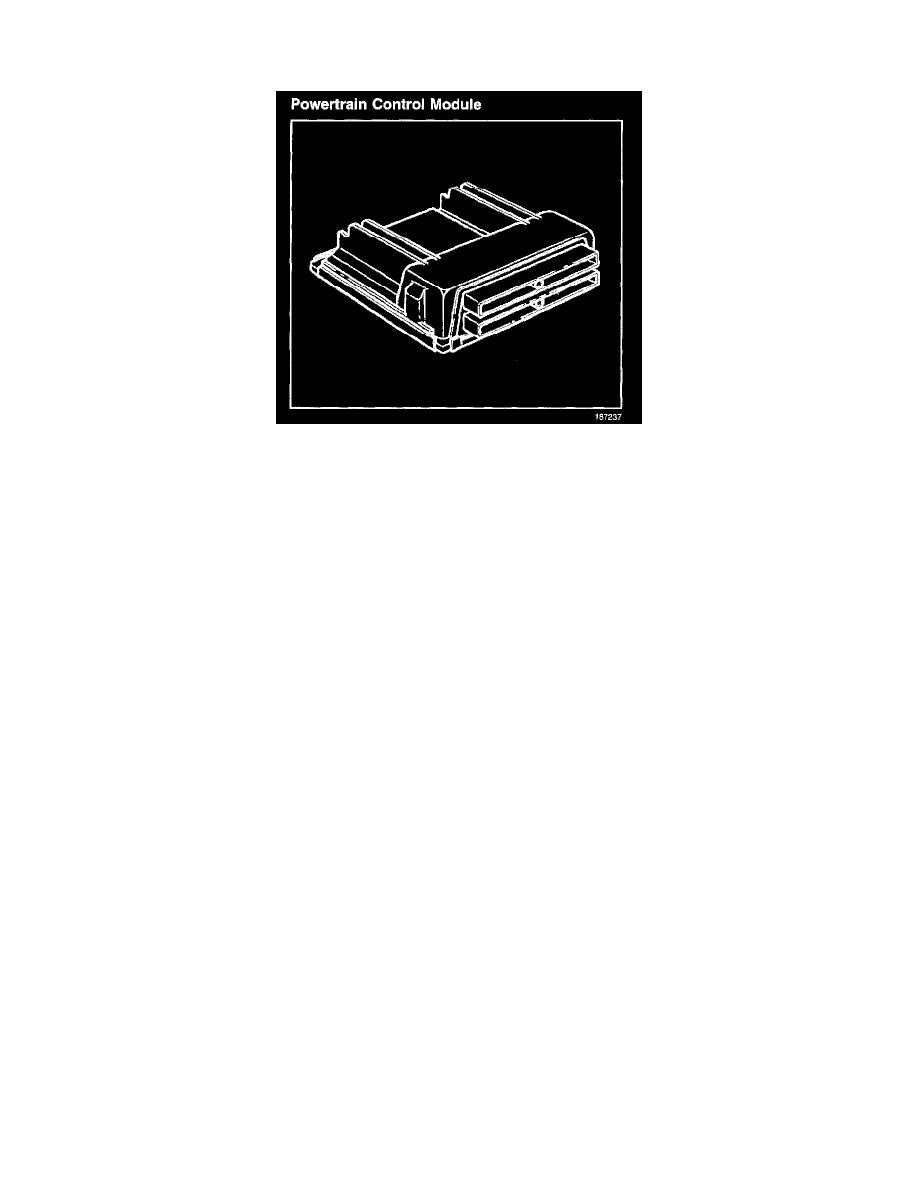Astro Van 2WD V6-4.3L VIN X (2002)

cylinders 1, 4, 6, and 7 in the case of an abusive maneuver.
Powertrain Control Module
Powertrain Control Module
The Powertrain Control Module (PCM) is located in the engine compartment. The PCM is the control center of the vehicle. It controls the following:
^
The fuel metering system
^
The transmission shifting
^
The ignition timing
^
The on-board diagnostics for powertrain functions
The PCM constantly monitors the information from various sensors and controls the systems that affect vehicle performance and emissions. The PCM
also performs the diagnostic functions for those systems. The PCM can recognize operational problems and alert the driver through the Malfunction
Indicator Lamp (MIL) when a malfunction has occurred. When a malfunction is detected, the PCM stores a Diagnostic Trouble Code (DTC) which
helps to identify problem areas. This is done to aid the technician in making repairs
The PCM supplies either 5.0 or 12.0 volts to power various sensors and switches. This is done through resistances in the PCM. The resistance is so high
in value that a test lamp does not illuminate when connected to the circuit. In some cases, even an ordinary shop voltmeter does not give an accurate
reading because the voltmeters resistance is too low. Therefore, a DMM with a minimum of 10 megaohms input impedance is required to ensure
accurate voltage readings.
The PCM controls output circuits such as the fuel injectors, the Idle Air Control (IAC), the cooling fan relays, etc. by controlling the ground or the
power feed circuit through transistors or a device called an output driver module.
The Powertrain Control Module (PCM) contains the remainder of the logic of the theft deterrent system. If a class 2 message containing a valid
password is received from the BCM, the PCM will continue to allow the fuel injectors to operate. The PCM will allow the fuel injectors to operate until
it decides there is no valid password coming from the BCM. If the PCM does not receive a class 2 message, or receives a class 2 message with an
incorrect password, the engine will crank and will not run or will start and stall immediately.
Input Components
The PCM monitors the input components for circuit continuity and out-of-range values. This includes performance checking. Performance checking
refers to indicating a fault when the signal from a sensor does not seem reasonable, such as a Throttle Position (TP) sensor that indicates high throttle
position at low engine loads or MAP voltage. The input components may include, but are not limited to, the following sensors:
^
The Vehicle Speed Sensor (VSS)
^
Mass Air Flow (MAF) Sensor
^
Intake Air Temperature (IAT) Sensor
^
Crankshaft Position (CKP) Sensor
^
Knock Sensor (KS)
^
Throttle Position (TP) Sensor
^
Engine Coolant Temperature (ECT) Sensor
^
Camshaft Position (CMP) Sensor
^
Manifold Absolute Pressure (MAP) Sensor
In addition to the circuit continuity and rationality check, the ECT sensor is monitored for its ability to achieve a steady state temperature to enable
Closed Loop fuel control.
